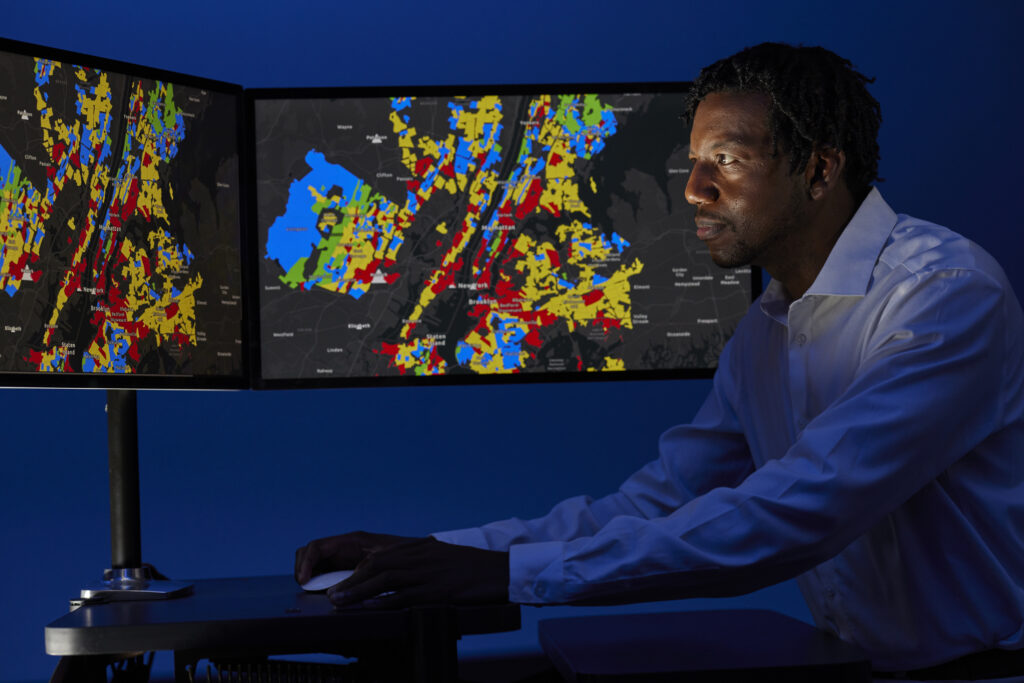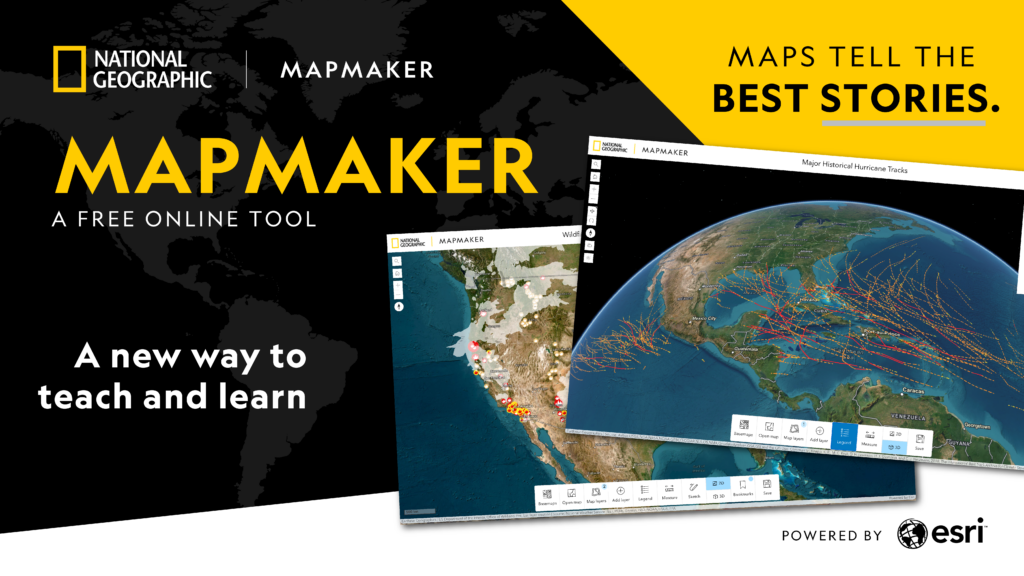
Geography Awareness Week is November 13 – 17
Geography is Everywhere!
The geographic perspective is at the core of our work at the National Geographic Society.

Geography isn’t just about maps and coordinates; it’s also about stories and offers different ways to learn, understand, appreciate and embark on a journey of reflection as we experience the world in our everyday lives.
National Geographic helped to establish Geography Awareness Week to inspire people to be part of a geographically-minded global community that understands geospatial issues and recognizes our impact on the world around us. One of National Geographic’s greatest traditions is to deepen knowledge of geography and the interconnected world around us through geographic storytelling and education.
Geography is a way of looking at the world, a way of understanding why things are where they are and how people’s movements and cultural, societal and political interactions and movements impact all of us.
Join us in celebrating Geography Awareness Week to uncover the boundless wonder of our world, and recognize that every step we take, every place we visit and every challenge we face is interconnected through geography.
National Geographic MapMaker
National Geographic and Esri have teamed up to create a reimagined version of National Geographic MapMaker. Maps are powerful devices that allow us to find our way, analyze and visualize complex datasets, solve problems, facilitate learning and tell stories. Embark on a journey where maps aren’t just lines on paper but gateways to immersive learning experiences for educators and students.
Designed with educators and students in mind, MapMaker allows educators to take their classrooms across the world and dive into National Geographic Explorer research. Teaching about real-world Explorers inspires learners to think like an Explorer, expanding curiosity, knowledge and critical thinking. We’ve curated a collection of resources and activities designed to accompany MapMaker centered around the Society’s impact areas — Wildlife, Ocean, Land, Human Ingenuity and Human Histories and Cultures.
The enhanced MapMaker is more powerful, engaging and educational than ever before. MapMaker doesn’t require a log-in and is free, intuitive and straightforward for anyone to use.
The Essence of an Explorer
Geography is inherent to every Explorer’s work. The geographic perspective helps us to identify connections and interactions within the world around us and inspire people to do the same through storytelling and education.
National Geographic welcomes Explorers from around the globe and seeks to build a community reflecting the diversity of our world. Learn how these inspiring Explorers use geographic approaches in their everyday work to help advance some of the Globe’s most pressing challenges.
Clinton Johnson
He is the Racial Equity & Social Justice Lead at Esri, founder and leader of NorthStar of GIS – a non-profit committed to creating a more racially-just world through more racially-just GIS, geography and STEM fields – and SVP of GeoEquity Innovation at the NAACP.
Radhika Bhargava
She recently finished her Ph.D. at the National University of Singapore's Geography Department, where she worked across the Sundarbans mangrove forest of India and Bangladesh to understand coastal maladaptation.
Alicia Odewale
Her work reanalyzes historical evidence of Black community resilience in the Historic Greenwood District in the wake of the 1921 Tulsa Race Massacre. Using archaeological investigations, radical counter-mapping, archival research and storytelling, she works to bear witness to how violence leaves a mark on landscapes, challenges historic neighborhood erasure and heals historical trauma.
Sera Tolgay
Through mapping, she translates this research into novel practices in coastal zoning, landscape planning and establishment of protected areas in heavily urbanized ecological corridors of the Sea of Marmara watershed.
Anthony Obayomi
His work aims to engage his community and a global audience with short films and photo series to tell the story of Benin’s art heritage with the goal of preserving the area's indigenous and cultural knowledge – especially the parts being eroded as a major consequence of colonialism.
Moriba Jah
He is an associate professor of aerospace engineering and engineering mechanics at the University of Texas at Austin and chief scientist to Privateer. He also co-founded Moriba Jah Universal, LLC, to co-create media, art and multiplatform entertainment aimed at taking Space Environmentalism mainstream to spread awareness about space debris — the ever-growing threat to humanity most people don’t know exists.
Victoria Stephanie Herrmann
As an Explorer, Assistant Research Professor at Georgetown University, and Director of Preserving Legacies, she has spent the past decade leading research initiatives and directing capacity building programs to support communities adapting on the front lines of the climate crisis and safeguard their cultural heritage.
Eduardo Neves
Neves and his team of local archaeologists, researchers and community members, working alongside Indigenous peoples and local communities, will create a digital record of the landscape through LiDAR technology. Their findings will support the need to protect the cultural and environmental heritage of the Amazon.
Sandra Turner
On a quest to explore the Caribbean’s natural World Heritage sites, her research focuses on geological formation of islands, changing landscapes and culture due to climate change impacts, the history of hurricanes and creating innovative approaches to teaching about our human connection to the ocean.
Photo credits (from top of page): National Geographic Mapmaker/Esri Sources Esri, USGS, FAO, NOAA; Mark Thiessen (2), Radhika Bhargava, Bethany Mollenkof, Annabel Staff, Mark Thiessen (2), Michael O. Snyder, Mark Thiessen, Sandra Turner
